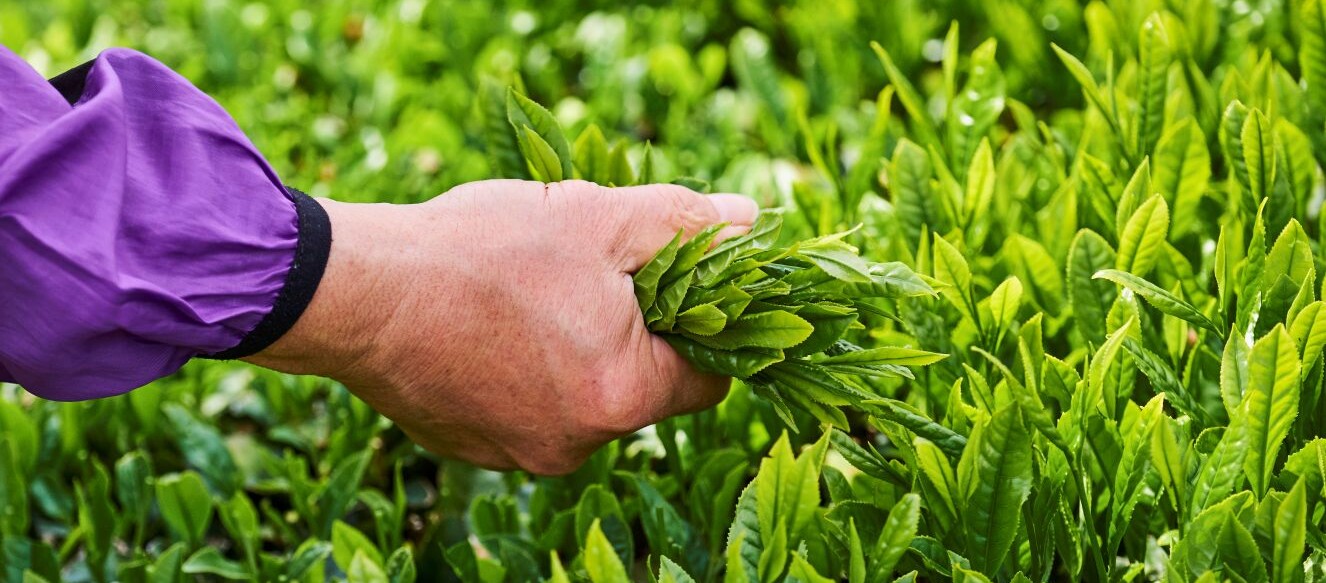Table of Content
- Matcha’s Rise from Ceremonial Drink to Mainstream Staple
- The Matcha Market is Growing and Businesses Are Taking Notice
- Why Supply Chains Can’t Keep Up with Growing Matcha Demand
- Not All Matcha is Created Equal
- What This Means for B2Bs Relying on Premium Matcha
1. Matcha’s Rise from Ceremonial Drink to Mainstream Staple
Matcha isn’t just any green tea. It’s a finely milled powder made from shade-grown leaves, traditionally used in Japanese tea ceremonies and valued for its vibrant color and smooth, umami-rich taste.
In recent years, it has gone global thanks to café culture, social media, and functional drinks and the growing involvement of international suppliers meeting rising demand.
These days, you’ll find it in lattes, smoothies, desserts, and even skincare. From powdered blends to ready-to-drink bottles and flavored infusions, matcha now comes in a wide range of convenient formats tailored to different lifestyles and consumption habits.
Health benefits have only fueled the hype. Matcha is packed with antioxidants, offers a gentler caffeine lift than coffee, and is known for providing a calm, focused energy.
Here is an overview of the top matcha markets in Europe:
| Country | Description |
Germany |
Leading the European matcha market, expected to reach €209.6 million by 2028. |
France |
Focus on organic ready-to-drink products and culinary-grade matcha. |
United Kingdom |
Rapid growth driven by matcha lattes and specialty coffee chains. |
Italy & Spain |
Emerging markets with increasing demand in the food and beverage sector. |
2. The Matcha Market is Growing and Businesses Are Taking Notice
That rising interest is showing up in the numbers. According to industry estimates, the global matcha market is projected to hit €2.26 billion in 2025, growing at a CAGR of 4.17% through 2030.
While still modest compared to the €127.30 billion coffee market (growing at 4.72% CAGR), matcha is finding its place as a premium alternative.
This growing momentum hasn’t gone unnoticed in the business world. From specialized tea suppliers and niche cafés to multinationals like Starbucks, companies are expanding their matcha offerings.
Product lines now include everything from ready-to-drink formats and ceremonial-grade powders to functional snacks and supplements, placing significant pressure on supply chains to keep up with rising demand and diverse applications.
Even though matcha product lines and suppliers have built reliable partnerships around the world in recent years, demand is still outpacing supply, leading to an important shortage across the market.

3. Why Supply Chains Can’t Keep Up with Growing Matcha Demand
Matcha is no longer tied to a single country or culture. As global interest continues to grow, more nations are beginning production, each responding to rising demand in their own way.
But this expansion isn’t solving the shortage. It’s actually contributing to it, as rapid growth puts added strain on quality, consistency, and supply chain reliability
At the same time, climate conditions and demographic shifts are significantly impacting both current harvests and long-term matcha output. Rising temperatures and unpredictable weather patterns are affecting the delicate shading and picking processes required for high-quality matcha production.
To make things more difficult, rural depopulation in key producing regions like Japan and South Korea has led to labor shortages and fewer younger farmers entering the industry, raising concerns about the sustainability of matcha cultivation over the next decade.
The table below provides an overview of the current major countries in the matcha production:
| Country | Role In Matcha Production |
Japan |
The leading source of premium matcha, especially from regions like Ujji and Nishio. However, production is limited by shrinking farmland, aging tea farmers, and declining interest from younger generations. |
China |
A growing producer focused on volume. Chinese matcha is generally intended for mass marketing, with lower production cost but also lower average quality. |
Taiwan |
Offers small-scale, artisanal production with a focus on quality. While respected regionally, volumes remain modest and export is limited. |
United States |
Early-stage cultivation in Hawaii and California. Production is still small and experimental, with a focus on organic and local sourcing. |
South Korea |
Some domestic matcha production exists, mainly for food and beauty sectors. The country remains primarly a consumer ans importer. |
While Europe does not currently have any major matcha production hubs, several countries, including Portugal and Scotland, are experimenting with small-scale tea cultivation in hopes of entering the market in the future.
4. Not All Matcha is Created Equal
Matcha is typically divided into different grades that are tailored to specific uses and quality expectations:
| Grade | Description | Typical Use |
Ceremonial Grade |
Highest quality; made from youngest, shade-grown leaves with vibrant color and delicate flavor. |
Traditional tea ceremonies, premium drinks |
Classic Grade |
Balanced in quality and cost; good flavor and texture, though not as refined as ceremonial. |
Everyday lattes, blended drinks |
Culinary Grade |
Stronger taste and deeper color; made from older leaves, optimized for mixing with other ingredients. |
Baking, desserts, smoothies, sauces |
Producing ceremonial-grade matcha is a labor-intensive and time-sensitive process. Plants must be shaded for weeks before harvest, and only the youngest leaves are selected. These are then carefully dried and stone-ground into a fine, vibrant powder.
Unlike standard matcha, which is typically made from older leaves with lower color, flavor, and texture quality, ceremonial-grade matcha requires stricter cultivation and processing to meet premium standards. The process requires expertise, seasonal precision, and ideal growing conditions.
While countries like China, Taiwan, and the United States are developing their own matcha industries, Japan continues to set the standard. Its combination of traditional techniques, regional terroir, and meticulous processing is difficult to replicate, which is why Japanese matcha is set as the industry standard in the premium segment.
5. What This Means for B2Bs Relying on Premium Matcha
For B2Bs in food, beverage and beauty, challenges are already emerging.
Prices for ceremonial-grade matcha are climbing and supply timelines are extending. Some producers are even lowering their standards or blending lower grade matcha to meet volume requirements.
This brings several risks for businesses sourcing matcha:
- Higher costs may hit margins or force price increases down the line.
- Quality control becomes more complex as supply diversifies beyond Japan.
- Brand integrity could suffer if product formulations quietly change.
To mitigate the impact, some B2Bs are exploring long-term direct partnership with Japanese suppliers or considering matcha from emerging sources.
However, these newer regions still face a trust gap when it comes to replicating flavor, texture, and sustainability expectations.
Conclusion
The global matcha shortage is more than a temporary disruption; it reflects a fundamental shift in supply and demand dynamics.
But within this challenge lies opportunities. As matcha cements its place in global consumer trends from wellness to gastronomy, its value as a premium ingredient continues to grow.
Are you looking for more information on tackling supply chain challenges or recent shifts in global markets? Read these insightful articles on europages’ online blog Inside Business to stay up to date:
"Made in Europe" Actually Made in China?

